A low-carb diet or low-carbohydrate diet involves the eating of foods that limit carbohydrates — to a total of less than 100g a day – and consuming more proteins and fats. The restricted carbs are mainly on sugary foods, grains, below-ground vegetables, bread, and fruits, among others.
The internet is filled with the low-carb diet talk, and health experts, as well as celebrities, have also pushed it into the spotlight. There are many types of low-carb diets. Atkins was the first low-carbohydrate plan that emerged more than four decades ago. Since then, other diets like paleo, Zone Diet, and ketogenic, or keto diet have arisen.
While each of these diets come with varying limitations on the amount and the kinds of carbohydrates to consume, they all have one thing in common: weight loss. Therein lies the current, primary purpose of a low-carb diet.
Over the years, this type of diet has become a controversial topic among dieticians, health experts, and other professionals. The point of keeping them at an impasse is whether a low-carb diet is indeed a milestone in weight loss or a cause of concern regarding our health.
Nevertheless, scientists and various studies agree that a low-carb diet has some hard-to-ignore mechanisms that work. A low-carb diet has been proved to help people experience faster weight loss results than those sticking to a low-fat diet. In fact, as the evidence shows, a low-carb diet for weight loss is sustainable.
People also follow a low-carb diet plan when they want to routinely limit carbohydrates to maintain a healthy weight when they want to shift to a different eating habit, and when they want to savor different types of food listed under the low-carb meal plan.
But before starting on a low-carb diet, it is recommended that one consults with their doctor first, particularly if they have a history with medical conditions such as hypertension or diabetes.
A low-carb diet may be popular, but not all science is behind the theories. Noom uses psychological and behavioral changes so you don’t have to pick up some trendy, fad diet.
You learn how to eat from the start, so you never have to diet again. Check out more on Noom!
What is a Carbohydrate?
Simply defined, carbohydrates are macronutrients occurring naturally in foods such as vegetables or grains. These macronutrients are sugars, fiber, and starch. All of them are ideal for energy dispensation for the body.
A human being needs three macronutrients for the body’s optimal functionality; carbohydrates, proteins, and fats. What makes carbohydrates fundamental is that they allow the body organs to function appropriately.
There are two types of carbohydrates, simple carbohydrates and complex carbohydrates.
Simple Carbohydrates
These are also referred to as simple sugars or refined carbohydrates since they are quickly digested and its glucose easily released into the body.
Simple carbs have most of their fiber and other nutrients removed.
Examples include white bread, pasta, and rice.
Most of their calories are empty, and they offer little to no nutritional value, but somehow, they lead to weight gain. Most junk foods have simple carbs.
Complex Carbohydrates
The body takes longer to digest natural, complex carbohydrates because they are formed by longer saccharide chains. The two main types of complex carbs are starch and fiber. Fiber is vital for controlling cholesterol and the improvement of the digestive system. Examples of complex carbs include oats, whole grains, brown rice, vegetables, nuts, and certain low-carb fruits.
Natural complex carbohydrates are linked to numerous health advantages. They are the body’s primary source of energy; however, it may lead to other unwanted health issues, mainly if one eats the wrong type of carbohydrates.
How to Calculate “Net” Carbs
The term “net carbs” is somewhat controversial, and many people have no clear understanding of what it means. In fact, not all nutrition experts agree on the term. Also, the net carbs indicated on packaged foods may not actually reflect the number of carbs a person’s body absorbs. Luckily, here is how you can calculate the net carbs in your foods.
Whole foods or organic foods come with naturally occurring fiber. To calculate the net carbs, you simply subtract the total amount of fiber from the total number of carbohydrates. The nutritional information of foods can be obtained from the USDA Food Composition Database Website.
Example of a net carb calculation.
A medium avocado comes with 17.1 grams of total carbs, of which 13.5 grams come from fiber. Therefore:
Net carbs = Total carbs – Fiber
17.1 total carbs – 13.5 grams fiber = 3.6 grams net carbs
Rx weight loss, the right way, with Noom
Get access to prescription weight loss medication with Noom.How Do Low-Carb Diets Work?
Low-carb diets have a simple working technique. They reduce or entirely eliminate glucose, which is contained in carbohydrates.
The elimination of glucose strips the body of energy, the preferred source of energy, resulting in the burning of stored fat for metabolic functions. Normally, the body doesn’t make glucose, but it stores some in the liver or the muscles that don’t last long. It is, therefore, dependent on sugar as a source of energy. When this sugar or glucose stored in the body runs out, fat oxidation occurs. This, in turn, leads to weight loss.
Some low-carb diet plans have quicker results than others. A ketogenic diet, for instance, puts the body into a mode that burns fat rapidly by getting rid of all glucose stores in the body. The diet involves eating a meager amount of carbs – 5 percent of total calories – 75 percent of calories from fat, and 20 percent of calories from proteins. However, most people don’t necessarily get this low before experiencing results.
The amount of carbohydrates required in a low-carb diet for weight loss varies with individuals. Nonetheless, striving to eliminate sources of sugar, mainly from dairy, legumes, and grains, while increasing the intake of healthy fats and protein to elevate calories will result in a healthy weight loss.
Why Do Low-Carb Diets Work?
Although some naysayers claim they know otherwise, at this point, saying a low-carb diet works is a scientific fact. Research shows that the diets are responsible for causing about two to three times more weight loss than the typical low-fat diet health experts advise people to follow.
The diets are safe, and there are no serious side effects or low-carb diet dangers reported. There are pieces of evidence that low-carb diets result in significant benefits in many important risk factors.
According to research, findings show that levels of triglycerides (bad cholesterol) reduce while HDLs increase. The level of blood sugar and blood pressure on a low-carbohydrate diet substantially go down.
A significant amount of fat burned on this particular diet is from the belly area and the liver. This is the kind of visceral fat considered dangerous. It usually surrounds the body organs fueling inflammation and disease.
Although the evidence is overwhelming, there is still enough skepticism as to why these diets are effective. Sadly, the findings are not conclusive; that is, it is not entirely known, and many think it is multifactorial, which means the reasons why the plans are effective for weight loss are many.
The Difference Between Noom and Other Plans and Programs
When it comes to learning how to eat and how to live for weight loss, Noom works from a psychological perspective. According to the Chief of Psychology for Noom, Dr. Andreas Michaelides, “By understanding the past behaviors and attitudes of all types of users, we know the best way to meet our users where they are in their journey to help them maximize their change of long-term weight-loss success.” Noom, as a weight-loss platform, uses the power of food logging, among other advanced technologies, to teach simple, key behaviors for lasting change. Behavior changes that include self-efficacy, motivation, and knowledge are just the start of how psychology can interact with food, so you lose more weight in a way that lasts a lifetime.
Noom works with tech-based tools partnered with support from real-life coaches in a structured program that connects the user with the social support and positive reinforcement needed to change behavior in a way that increases the likelihood of success.
Not all dietary changes are for everyone, and no two weight-loss plans should be the same, which is precisely how Noom works.
By identifying specific areas where changes can be made to reach goals of weight loss and health improvement successfully, users realize where their best changes are to be made and how those changes are incorporated into a lifestyle they can adopt for the long-term.
Eating on a Low-Carb Diet
Ways to Get Healthy Fats
Use ingredients with full-fat.
Healthy fats play a significant role in ensuring a person lives a healthy life. The first step to getting more of these fats is by ditching some of your favorites and using ingredients with full fat.
Any low-fat or products labeled fat-free, lite, or light should be eliminated. This includes any artificial creamers, egg substitutes, and reduced-fat peanut butter. Instead, begin with fatty cuts of meat, use fish containing lots of fat such as sardines and salmon, try avocados, eggs, and typically any whole food rich in fats.
Cook with fat.
Instead of steaming foods like chicken, meat, or vegetables, cook them with fat. But ensure that you use natural, healthy fats and oils like butter or coconut oil. In this case, you can use it as much as you want.
Try different fats.
Different fats have varied tastes. By having a stock of various kinds of fats, you will be able to experiment with diverse flavors. You may use butter, peanut oil, sesame oil, or any other healthy fat of your choice.
Prepare low carb recipes.
Use the various low-carb foods to make low-carb dinner recipes. You could prepare a low-carb pizza, shirataki noodles with a low-carb salad, a meat pie, low-carb frittata with spinach or any other vegetable, and many more. These recipes will deliver fat aplenty while you enjoy your preferred low-carb meals.
Top your dishes and garnish with high-fat foods.
Top your dishes with dressings, low-carbohydrate sauces, oil, and butter. This is another way of getting the most out of healthy fats. Whatever sounds delicious, if it is on the allowed food list, you can have it.
Also, you can use cheese, nuts, avocados, cured meat, and olives for a better variety of flavors. Add a little of these foods to your meals, and you are good to go.
Eat or prepare snacks containing fat.
You can consume hard-boiled eggs, eat nuts, or prepare other snacks with these foods and eat them between meals. They contain enough healthy fats to get you started on the routine.
Add a cheese course.
Whether you use it as a topping, or simply savor it as low carb desserts, cheese is one of the simplest low-carb additions with lots of calories to help you feel full. It is nutritious, and you get nourishing fats.
Blend fat into your tea or coffee.
Instead of milk, you can pour coconut oil, heavy whipping cream, or butter into your favorite drink, coffee, or tea. As a rule, if you have to add milk, only add a negligible amount to avoid the intake of high-carbohydrate content. This shot of fat makes a sweet low-carb breakfast to help you feel full for longer. Nonetheless, use this method with caution as it may hinder fast weight-loss results if you drink too much fat supplying too many calories.
Keto, Moderate, and Liberal Low Carb – Differences?
Low-carb diets are not all the same. The exact ratio of the carbohydrate intake, and fat together with protein consumption in a low-carb high-protein case varies from one diet to another.
Ketogenic Low-Carb Diet
A keto diet is a low-carb high-fat (LCHF) diet, which was first introduced to treat epilepsy in children more than five decades ago. It is among the most extensively-researched diets that have portrayed positive results, including weight loss, lower blood glucose and insulin levels, reduced hunger cravings, among others. However, the goal for many is weight loss.
Ketogenic, low-carb diet macros aim at 75 percent of calories from fat, 20 percent of calories from protein, and 5 percent of calories from carbohydrates.
Moderate Low-Carb Diet
While a strict low-carb diet is meant for those looking to lose weight rapidly, low-carb diet macros fit those who want to shed off some pounds at a gradual pace as blood glucose levels are controlled.
Moderate low-carb diet macros focus on the intake of between 20 to 50 grams of carbohydrates in a day. This constitutes between four and 10 percent of energy from carbs in every meal.
Liberal Low-Carb Diet
A liberal low-carb diet is perhaps the best low-carb diet for weight maintenance. It is also ideal for people who exercise regularly or those that are sensitive to carb restriction, especially those that experience low-carb diet side effects.
The amount of dietary carbohydrate intake in a liberal diet consists of 50 to 100 net carbs in a single day. This means that between 10 to 20 percent of energy from carbohydrates should be in your diet.
Science says there are some benefits to a low-carb diet, but there’s a better way. With Noom you don’t have to restrict carb intake to improve health.
When you try Noom, you take on healthier lifestyle habits so you learn how to eat and never diet again.
Your Health and the Low-Carb Diet
Low-Carb Limitation Lowers Insulin Levels
Fat-storing hormone insulin is an important hormone controlling energy storage and the regulation of blood sugar levels in the body. It stimulates both the production and storage of fat as well as letting the fat cells cling to the fats they are already carrying.
During the oxidation of fat, when the body doesn’t have enough glucose, or when the body needs to use glucose instead of fat, insulin hormone is involved. In short, the hormone stimulates lipogenesis and inhibits lipolysis.
Studies have established that low-carbohydrate diets result in a radical and an almost instantaneous lowering of insulin levels.
Many experts believe that the reason why low-carbohydrate diets work is because of the lowered insulin levels. They claim that the restriction of carbs in a diet forcing the insulin levels to drop leaves the fat cells accessible for use as an energy source. This reduces hunger pangs and the need for eating.
Rapid Drop of Water Weight
Sticking to a low-carb diet leads to a rapid loss of weight during the first two weeks. One of the reasons attributed to this result is the reduction of water weight. This is believed to work in two ways. One involves a decrease in insulin levels, which makes the kidney shed excess sodium from the body. This mechanism is also known to lower blood pressure.
Glucose is stored in the body as glycogen, which holds water in the liver and the muscles. When the amount of carbohydrates consumed is lowered, the level of glycogen in the body goes down, so does the water.
Although the claims argue that losing water leads to weight loss, it is far from being the main benefit of following a low-carb diet plan. This low-carb meal plan aids in eliminating the potentially harmful fat in the abdominal cavity.
That said, weight loss by water-weight reduction is only part of the explanation, but the significant advantage is fat loss.
Low-Carb Diets Are High in Protein
People on a low-carb high-protein diet end up consuming more proteins since they substitute low protein foods like grains and sugars for high-protein low-carb foods such as fish, meat, and eggs.
According to studies, high-protein low-carb foods causes satiation, curbs the appetite, and increases metabolic functions. It also increases muscle mass and muscle activity burns calories throughout the day.
Nutrition experts and other professionals believe the low-carb high-protein content is another reason why a low-carb diet is effective.
Low-Carb Diets Curb Your Appetite, Resulting in a Reduction in Calorie Intake
The impact a low-carb diet has on one’s appetite is perhaps one of the main reasons why it is highly effective for weight loss. People would go on eating fewer calories when their appetite is low.
In fact, experts exploring low-carb and low-fat diets recommend a restriction of the number of calories in the low-fat category. On the other hand, those in a low-carb group are allowed to eat until they are satisfied.
Ironically, the low-carb groups end up losing more weight.
There is also evidence that low-carb diet ketosis has a substantial effect on appetite reduction despite the increased protein intake being a significant factor.
Other pieces of evidence also show that a low-carbohydrate diet in some way benefits leptin and ghrelin – appetite-regulating hormones.
The Forgotten Benefits of Low-Carb Diets
There are different types of weight-loss eating programs. A low-carb diet and calorie counting are some of the popular plans. A low-carb diet offers the best and the quickest results all because of some forgotten benefits and perks.
Calorie Counting and Weighing of Food is Not Necessary
The basics of a low-carb diet are simple, eat when hungry and eat until you are satisfied. In short, what you should strive for is to know how many carbs in a low-carb diet. Counting calories or weighing your food is absolutely unnecessary. But remember, while you can eat meat, fish, eggs, or any vegetable that grows above the ground, you should avoid starchy and sugary foods.
A low-carb diet merely involves limiting carbohydrates. Studies focused on low-carb diets have found that dieters could consume as much as they wanted. Lowering these nutrients reduces insulin hormone levels signaling the body to release fat, which is ideal for defining the set point for body weight.
In a study involving a group of obese women randomized in a low-carb diet, a low-fat diet, or a low-calorie diet followed for six months and without calorie restriction, the weight loss was:
Those on a low-carb diet consumed 20 grams of carbohydrate every day.
However, after two weeks, they were allowed to up the number to between 40 and 60 grams a day so long as their body maintained the ketosis state, which was depicted by urine testing.
A restriction in calories for the low-fat group was held at 30 percent, but they consumed about 55 percent of their calories as carbs.
From the findings, it is clear that despite the low-carb group having eaten as much as they desired, their calorie intake was naturally lowered to about the same level as that of the low-fat category. Nonetheless, they still lost more weight, averaging a loss of 7.6 kilograms compared to the fat group, which had an average loss of 4.2 kilograms.
The data only proves that counting calories and weighing your food are not necessary for one to utilize a low-carb diet to lose weight.
You Can Eat All the Fiber that You Want
The best thing about a low-carb diet is that despite watching your carbohydrates, you still have plenty of food choices with fiber abundance. Fiber facilitates healthy living, not to mention how it helps in body weight maintenance. It is one nutrient source that contributes to a reduction in the risks of many health issues.
Fiber helps you remain full for longer. It takes up much of the space in the stomach by absorbing water. In a low-carb diet, if you want to stay satiated for long, the good news is you can eat all the fiber you want.
You don’t have to weigh it or give it too much scrutiny; it doesn’t raise blood glucose like other high-sugar carbohydrates. In fact, the nutrient assists in moderating the effects of usable carbs in the body, which is advantageous as it further enhances your ultimate goal of weight loss. Worth noting is that fiber is also good for your digestive system. It can also help prevent heart diseases and the maintenance of LDL cholesterol and blood glucose.
You don’t have to worry about skipping the carbs with Noom. You can eat the foods you love and still lose weight. Check it out!
More Benefits of Low-Carb Diets
Weight Loss
By now, you have a clear understanding of the low-carb diet and how it facilitates weight loss. It is by far the most significant and the primary reason for sticking to a low-carb diet in the first place.
A low-carb keto diet facilitates fast or rapid weight loss. However, the reduction of the carbohydrates doesn’t just engage the body in a weight-loss process, it also provides other health benefits. So, what other advantages accompany a low-carb diet?
Minimize the Intake of Sugar and Starches
Avoiding the long list of bad carbs stabilizes the blood sugar, and the levels of insulin in the body comes down. This effect results in an increase in the fat-burning process. It also makes you feel more satisfied, which reduces the amount of food you eat, leading to more weight loss.
The stabilization of blood sugar and the control of the fat-storing hormone insulin levels help in addressing other health concerns such as heart disease, dyslipidemia, hypertension, and type 2 diabetes apart from obesity and overweight problems.
Both protein and fat have a negligible influence on blood sugar. Although protein may cause a small rise in the levels of blood sugar, it cannot be compared to the impact of carbohydrates. Therefore, the two do not enhance the extreme production of insulin.
Elevated insulin levels are associated with cardiovascular disease and type 2 diabetes. It also is one of the indicators of another health condition – metabolic syndrome.
According to studies, the levels of insulin increase way before the abnormal sugar readings are detected. A chronically increased output of this hormone from the pancreas may result in pancreatic exhaustion, and when there is little to no more insulin produced, the sugar levels become hard to control.
At this low point, an individual is diagnosed with Type 2 diabetes. This can easily be controlled using a low-carb diet, which doesn’t allow one to consume too many simple carbohydrates like white flour or sugar.
There is also overwhelming evidence showing that even though a diet high in healthy dietary carbs such as whole grains is beneficial to sick patients, low-carb diets are relatively comparable, if not better than LFHC (low-fat high-carb) diet for weight loss and the improvement of other related medical conditions including postprandial glycemia and insulin production.
A study published in The Upsala Journal of Medical Science in 2005 with two groups of patients with Type 2 diabetes showed significant and positive effects on all the 16 patients following a low-carb plan as opposed to the 15 on a high-carbohydrate diet. Consequently, the low-carb group marked a notable reduction in body weight that remained sustainable even after one year.
The Metabolic Advantage
It is controversial, but some experts claim a low-carb diet has metabolic advantages. That is, burning fat takes more calories, so you expend more calories. In a nutshell, this means that following a low-carb diet is a great way of increasing expenditure, and the resulting weight loss is as a result of the reduced intake of calories.
One study conducted in 2012 supports this hypothesis. The findings showed that an exceptionally low-carb diet increases energy expenditure in comparison to a low-fat diet during the weight-maintenance period. The energy increase was about 250 calories, which can be likened to 60 minutes of moderate-intensity workout each day.
On the contrary, another paper claims that the low-carb diet with high protein content is responsible for the energy expenditure instead of the low-carb diet itself.
Even so, the metabolic advantage may also be caused by other means. On a ketogenic diet, that is when the carbohydrate intake is kept really low, much of the proteins ingested are first converted into glucose in a process referred to as gluconeogenesis.
Improved Cognitive Function
The human brain needs healthy fats for optimal and proper functioning. It is better equipped at controlling one’s moods and regulating the body hormones. Don’t let the alertness and the feeling sugar and high-carbohydrate meals give you fool you. It won’t take long before you begin experiencing exhaustion, irritation, and continually feeling grumpy.
Sugar addiction comes with unpleasant effects, especially on the brain and its function of raising insatiable cravings, increasing anxiety as well as fatigue. On the contrary, healthy fats and the optimum amounts of cholesterol, function like antioxidants and antecedents to some significant brain-supporting molecules and neurons that control things like mood, energy, memory, and learning.
The brain is packed with fatty acids, and it needs a continuous supply of healthy fats from your diet for it to effectively work. According to one study, a high-sugar diet with a deficiency of fatty acids has substantial negative metabolic consequences on cognitive function. The effects were associated with the intake of too much glucose, which impacted the insulin action that controls brain-signaling mediators. The findings show a reduced cognitive score and insulin resistance.
Noom offers the option to record blood glucose levels, so you can see just how the foods you eat affect levels.
Helps Fight Cancer
There might be a relationship between cancer cell proliferation and refined carbohydrates and sugars. The two contribute to free and drastic damage while they feed the cancerous cells. However, a low-carb diet, which cuts on the consumption of the two nutrients, may be a natural treatment for cancer. It facilitates improved immunity and lowers oxidative stress.
According to some studies, the intake of carbohydrates influences the biology of prostate cancer. Through findings were from animal tests where animals were fed a no-carbohydrate ketogenic diet (NCKD), the test subjects experienced significantly smaller tumors. They survived longer than their counterparts fed a Western diet.
The Western diet-fed subjects received an equivalent amount of a standard human diet, and they had higher serum insulin, which was linked to substantially increased blood sugar and tumor tissue growth.
When the supply of energy to the cells is cut off, the healthy cells survive by using fat for energy. The cancer cells, on the contrary, thrive as long as they have access to glucose. They cannot shift and use fat for energy.
Improved Digestion
To some individuals, reduced sugar intake means better digestive function. Harmful bacteria that sometimes grow well in the digestive system is fed by sugary foods. What this means is that a diet high in carbs like starches and sugar may be the beginning of IBS, the development of candida virus, and potentially a leaky gut syndrome.
On the other hand, food sources rich in fiber like most low-carb vegetables, and the ingestion of healthy fats and high-quality proteins all function like fat-burning meals that help sustain a healthy digestive system by reducing bacterial growth.
In 2008, the Journal of the American Gastroenterological Association published one study, which revealed how patients with irritable bowel syndrome (IBS) on a very low-carbohydrate diet (VLCD) showed symptom improvements. In the study, patients with moderate to serious IBS were given a 14-day typical diet, then a month of VLCD consisting of 20 grams of carbohydrates per day. They reported an improvement in the overall health, subsiding abdominal pain, and better stool habits.
Did you know eating a well-rounded diet rich in fiber can help improve gut health?
Find out how to eat the right foods for health with the powerful, clinically-proven app Noom. Lose weight for the last time this time.
Reduced Acne Problems
A low-carb diet has also been linked to the reduction of acne problems. Although it may seem highly unlikely at first, a few studies out there prove there is a connection between high-carb – high-glycemic – diets and acne.
Reduced ADHD Symptoms
A low-carb diet isn’t only limited to improving one’s cognitive function, it also reduces the symptoms of ADHD. Although the studies are still inconclusive and many experts claim it is a myth, one review shows there is a need for more studies on the relationship between long-term sugar consumption and the risk of ADHD.
That said, a study published in the year 2011, apparently shows that a shift in a person’s diet, including reduced consumption of sugary and processed foods, has a positive impact on the reduction of ADHD symptoms in children with the condition.
This is a clear suggestion that there is a possibility of reducing the symptoms of the condition using a diet change, to say the least. Though according to other scientific studies, only the reduction of sugar may not suffice. A restriction in the majority of the digestible carbs may have an effect. But what is the possible clarification of these effects?
There are few scientists out there who are convinced of the notion that the symptoms of the ADHD condition can be likened to the symptoms of withdrawal from addictive drugs. If the child, for example, is addicted to junk food or glucose, should this type of diet be withdrawn, the problem may soon disappear.
Others believe that the explanation lies with large amounts of processed dietary carbohydrates, which will likely induce massive swings in blood sugar. A few hours after consuming a meal, when the blood sugar falls, the body is likely to release hormones like adrenaline to eschew the low sugar. As a result, the symptoms associated with ADHD are accentuated. A low-carb diet will restore normalcy in the blood sugars and thus eliminate the problem, based on some significant research.
Link Between Prediabetes, Diabetes and the Low-Carb Diet
Prediabetes is a condition characterized by abnormally elevated glucose (high blood sugar) levels as a result of insulin resistance. When the body doesn’t utilize insulin properly, the condition arises. It is an indication of type 2 diabetes.
In prediabetes, the blood sugar level is above normal but isn’t high enough yet to be called type 2 diabetes. However, it may show that the long-term damage of diabetes is already happening. It affects both the young and adults.
A diagnosis of prediabetes doesn’t mean you have or that you will get type 2 diabetes, the pivotal point is to get out of the range. Early intervention can be achieved simply with a low-carb diet for diabetics. Ensuring that you keep your carbohydrates within the healthy range, you are on the right path. You can watch your carbs with the glycemic index scale.
A glycemic index is a tool used to determine how different types of foods could affect your blood sugar. Foods high on the glycemic index scale will raise your blood sugar rapidly. So, aim for foods on the lower end of the scale if you are on a low-carb diet.
How to Cheat on a Low-Carb Diet
Do it Consciously
Well, not all people can be expected to follow a low-carb diet and not be tempted to stray a little. Good news, you are allowed to cheat, but wisely. Although it is not encouraged and might lead to some side effects like cravings, hunger, weight gain, and or just feeling bad, you can follow these steps to do it smartly.
It all begins with you knowing yourself and if you can cheat once or twice and still continue with your low-carb diet. Keep track. Do it deliberately. Set some rules and follow them. Strategize on what you will eat for your cheat and what shouldn’t make it to the plate. Stick the note with all the rules and tips in your kitchen to always remember how to consciously cheat on low carb.
Cheat on Foods Low in Carbs
The least bad choices are the best to cheat on. For example, if you crave a regular pizza, why not opt for the thin crust in place of the thick one? Also, a piece of cheesecake or a chocolate mousse is way better than your sugary dessert. The point is to keep the damage minimized.
Only Eat Small Portions
By cheating wisely, it doesn’t mean having loads of high carbs in a single bite. Should you decide to cheat, have a bite of someone else’s dessert or sweet instead of ordering a whole serving for yourself. Don’t be ashamed of abandoning portions of the sugary foods on your plate after scooping two or three spoons. Be smart!
Finish Your Meal First
Before cheating, finish your low-carb meal first. This way, the ingested fat and protein will reduce the speed at which the glucose you eat on your cheat is absorbed.
Try it in the Evening
Stick to your low-carb diet during the day, and try the cheat after you’ve prepared your low-carb dinner recipes and had your fill. This is advantageous in that it puts your body in ketosis during the day and limits the window for cheating at night. The timing makes the most out of the overall time one spends burning the ketones.
Less Sugar is Better
The temptation is high when one is on a low-carb diet, and everything sweet will suddenly be sweeter than you remember. Avoid temptation. Try less sugar in your snacks or cheat meals.
Add More Fat
While you should keep away from sugar, try adding more healthy fats to your meals, like olive oil to your salads or add cheese to your crackers and butter to your low-carb bread. You can also use cream with low-carb fruits like strawberries, raspberries, and blueberries. The goal is to have as much fat as you can.
Make it Count
Don’t settle for less. Ensure that when you cheat, your carbs count. Wait for what you love, and cheat for it.
Cheat Before or After a Workout
This will allow for the ingested sugars or carbohydrates to be burned by the workout. Eating after a workout will ensure that the carbs replace the used-up glycogen stores in the body.
Finally, after cheating, you can anticipate hunger and cravings, brace yourself, and don’t look back. Also, learn from your cheat and try to understand what it is that is driving you there. Then forgive yourself. Do not feel bad!
On Noom, all foods are allowed, nothing is restricted, so you get to eat the foods you love without feeling bad.
Low-Carb Diet Side Effects and Helpful Tips to Ease Them
Low-carb diet dangers are not so extensive or universal. Certain people will experience specific symptoms, whereas others will not. The side effects are mostly felt the first week or two after a person begins the keto diet.
Induction Flu
This side effect comes with symptoms that imitate those of the flu. They are experienced mostly in the first week of transition, typically between days two and four. Induction flu is characterized by a low-carb diet headache, fatigue, and feeling lethargic. There is a likelihood of irritation, nausea, and confusion.
Normally, the symptoms will subside after a few days. Alternatively, you can use home remedies to get rid of them altogether.
Remedies
- Use salty water. Add half a teaspoon of salt into a glass of water. Stir to dissolve the salt and drink the solution. This will keep the effects at bay.
- Eating more fat is another trick. It will give you the energy you need to carry the day.
Leg Cramps
Leg cramps are a common side effect of low-carb diets. As you lose water weight, electrolyte levels, such as potassium and sodium, also drop. When you don’t have enough electrolytes, muscles can contract to cause cramping. This is especially true of leg cramps on a low-carb diet.
Remedies
Drink enough fluids and obtain enough salt to minimize the magnesium loss and help get rid of the cramps.
- Try magnesium supplementation, via a good multivitamin, if necessary.
- If the two methods fail, try adding more carbs to your diet.
Low-Carb Diet Constipation
Constipation is another possible side effect, especially for those transitioning to a low-carb diet for the first time. This happens as your digestive system is trying to adapt to the change in diet. Water loss at the beginning of a low-carb diet, as glycogen stores are released, is another factor in the development of constipation.
Remedies
- Plenty of fluids and enough salt.
- Consume foods with lots of fiber, like vegetables.
As a last resort, a sugar-free magnesium drink may be used to relieve the low-carb diet constipation.
Bad Breath or Keto Breath
When the body enters ketosis and begins oxidizing fat to ketone bodies that fuel the brain, acetone is produced. The acetone is responsible for the keto breath often experienced by some individuals. From time to time, the smell may turn up as body odor during workouts.
You may also notice changes in the scent of your urine. Acetone is also released from the body during urination, thus the difference in odor.
Remedies
- A breath freshener is appropriate for disguising the bad keto smell.
- Hold on for a week or two, it often is temporary, and it will subside.
- Eat more carbs, between 50 and 70 carbs, to reduce the degree of low-carb diet ketosis. You can alternate this with intermittent fasting.
Heart Palpitations
Rapid heartbeat is another common low-carb diet side effect, particularly during the first 14 days on a diet. Dehydration is, at times, the cause. When the fluid in the bloodstream reduces, the heart, to maintain the optimal blood pressure, pumps the blood harder. Electrolyte imbalance is another potential cause of heart palpitations. It’s essential to get enough sodium and potassium each day.
Remedies
- Drink lots of fluids and get enough salt.
- Monitor and maintain blood sugar if necessary as the cause may be related to stress hormones. If you are taking diabetes medication, speak to your doctor first.
If the remedies don’t work, try increasing carb intake to minimize the effects of the low-carb diet.
Tracking carb intake can be tedious, at best. Counting macros is as outdated as counting calories, so why not try a new weight-loss plan that works with the power of psychology and natural, steady changes for lasting weight loss.
Decreased Physical Performance
Decreased physical performance occurs due to lack of fluids, and the body’s adaptation to burning fat, which takes more than a week.
Remedies
- Drink enough water and add half a teaspoon of salt half an hour or an hour before physical activity.
- To adapt faster to low-carb diet ketosis, exercise more, and after a while, this side effect will fade.
Temporary Hair Loss
Dietary change is one cause of temporary hair loss. When a person starves him/herself, or simply restricts the required number of calories, this condition may occur.
Hair loss often happens a few months down the line after starting a new diet. You will start noticing hairs on your brush when they begin to fall out. Lucky enough, it is a temporary thing and is hardly noticeable in most people on a low-carb diet.
Remedies
- Being a natural thing for some people, the best thing they can do is wait it out. It will come to pass.
- Increase the intake of nutrient-dense foods. Get enough healthy fats. It will help you regain hair faster.
- Stress is also linked to hair loss. Getting good sleep and avoiding other stress-causing situations is one of the ways to fight hair loss.
High Cholesterol
A low-carb diet leads to increased HDL cholesterol, which is a portrayal of lower heart disease risks. It downgrades the signs of vasoconstriction that cause various cardiovascular complications.
On rare occasions, an elevation of LDL and total cholesterol may be experienced and is a risk worth not ignoring. High LDL particle count indicates a potential risk of heart disease.
Remedies
- When your lipid profile doesn’t look that impressive:
- Leave butter coffee alone. Minimizing certain fats is likely to lower cholesterol levels.
- Try intermittent fasting and eat only when you are hungry.
- Use healthy, unsaturated fats like avocados, olive oil, and fatty fish.
If none of these work, talk to your doctor who will help you determine whether a strict high-fat diet is at all necessary. This will give you a chance to revise the type of carbs you eat and the amounts as well.
Alcohol Tolerance
There are cases where people following a low-carb diet notice alcohol tolerance. The real reason behind this phenomenon is not yet known but is believed to be because the liver is engaged in producing glucose or ketones, leaving it unable to spare enough time for slowing down the alcohol process.
Remedies
Just as the reason why alcohol tolerance occurs for some people on a low-carb diet is unknown, so it is a method of reversing tolerance. Since the body burns alcohol for fuel before fat, it is best to maintain a moderate alcohol intake on low carb.
- Stick with alcohol with no added sugar or substantial carbohydrate count.
Common Mistakes on a Low-Carb Diet
There are stumbling blocks on a low-carb diet that could make one stray from his or her goals.
Here are a few things to remember when following a low-carb diet.
DON’T:
Completely eliminate carbohydrates – In many diets, if you are consuming less than 40 percent of carbs from food, it’s considered low carb. However, the biggest mistake you can make is to eat too few carbs. The carbs you want to consume come from nutrient-rich vegetables. For better health, ensure that you get enough nutrients from the foods you consume. A deficit of carbohydrates may result in several side effects that could be detrimental.
Forget to eat vegetables or less sugary fruits – In fact, veggies should constitute more of the diet than any other food. When choosing fruits, berries tend to be the lowest in carb count. Other fruits like bananas, apples, and grapes, though packed with excellent nutrients, also have more carbs.
Fear fat – By fat, it means the healthy fats that are useful for the body. Don’t be tempted to go low on fat despite the negative vibes about how dangerous fat is. It will help you feel satisfied, so you feel full. Rest assured, cutting out fat from your low-carb diet to increase weight loss is the wrong idea. Without dietary fat to keep the process moving, the body will turn to protein (via muscle tissue) for fuel.
Forget fiber – When you are carb-cutting, you need to make sure that you are getting the carbs from fiber-rich whole grains – (such as quinoa, oats, faro, and barley, but this depends on your level of tolerance) legumes and vegetables. Fiber is good for digestion. While at it, don’t forget to utilize high-fiber chia and flax seeds and limit refined grains that have no nutritional value.
Forget to plan – Make a shopping list, clean your fridge, and let go of old habits of grabbing anything when you are hungry. Take time to reconsider your habits. Always know what you are going to eat and have the ingredients ready.
Get into a rut – Have a variety of food recipes to avoid eating the same thing every day. Have a menu for the whole week!
Fall for the “ketogenic” packaged foods – Though these prepackaged foods may be considered low-carb and high-fat, they are heavily processed. Some research has shown a link between processed foods and obesity.
Cheat too early or too often – It isn’t recommended. Don’t be fooled by early results – you need to stay low-carb to keep losing weight. If you get used to cheating too often, it won’t take long before you realize you’ve strayed too far and started regaining the weight you lost.
Forget to exercise – No diet alone is perfect for losing weight without some sort of exercise. So, never forget to do some physical activity to help you reach your goals faster.
Your Low-Carb Diet on the Move
Sometimes, the best way to enjoy meals while traveling is to have a plan of your own. The restaurants might not give you what you want. Here are some tips for your low-carb diet on the move.
- Prepare a low carb meal first before you leave and fill up. Eggs, bacon, some leftovers, and other easy to cook meals should suffice.
It is hard to resist some food offers while you travel, and the only way to keep off is to ensure that you pack a few low-carb snacks of your own.
Cheese, some nuts, dry salami, sesame crispbread, and parmesan cheese crisps are a few examples.
Coffee with melted butter, coconut milk, or heavy cream will help you keep hunger pangs at bay.
- Try intermittent fasting. Skip meals during a select period that lasts until you’re ready to sit down and choose a lower-carb option.
Alternatively, you can have one filling breakfast before you leave home.
- Perfect the art of dining out at restaurants. Be confident and ask for food that is friendly to your low-carb diet. As far as drinks are concerned, water, dry red wine, and light, lower-carb beers are worth it.
Don’t use your voyage as an opportunity to cheat on your diet. Be on it for the long haul. Remember: don’t cheat too early or too often.
Commit yourself to see it through. Before leaving home, keep it in your mind that you want the diet to work. Plan for eating on the go and check your route for low-carb friendly restaurants.
Studies on the Low-Carb Diet
A Randomized Trial of a Low-Carbohydrate Diet for Obesity – New England Journal of Medicine
In the study, 63 people were randomized to two diets for 12 months; a low-fat diet group and a low-carb diet group, and the low-fat group was calorie restricted. From the findings, a 7.3 percent loss of total body weight was realized in the low-carb group compared to the low-fat group, where the weight loss was represented by 4.5 percent. The data materialized after about three to six months.
The Effects of a Low-Carbohydrate Ketogenic Diet and a Low-Fat Diet on Mood, Hunger, and Other Self-Reported Symptoms – Obesity
The study featured a total of 119 overweight persons randomized to a low-carbohydrate, ketogenic diet, or low-fat calorie-restricted diet for six months. The results showed that the low-carb group realized a weight loss of 28.4 pounds, whereas the low-fat, calorie-restricted group lost only 14.7 pounds. The low carb group also experienced less hunger.
Low-carb diet: Can it help you lose weight? – Mayo Clinic
According to the article, not only does a low-carb diet help you lose weight, but it also helps in the prevention of various medical conditions like metabolic syndrome, high blood pressure (hypertension), and type 2 diabetes. It also claims that any diet that can help you shed off some pounds will help keep cardiovascular disease and diabetes at bay.
The Effect of a Low-Carbohydrate, Ketogenic Diet Versus A Low-Glycemic Index Diet on Glycemic Control in Type 2 Diabetes Mellitus – Nutrition and Metabolism
The study went on for six months, and it featured 84 obese people with type 2 diabetes randomized to a low-carb, ketogenic diet, or a low-glycemic calorie-restricted diet. The low-carb group lost 24.4 pounds, which was more than the low-glycemic group at 15.2 pounds.
Low-carb diets are trending, popular, and effective. Cutting carbs and increasing fat intake helps reduce hunger and, believe it or not, calorie intake. You’ll find hurdles along the way, but as long as you steer clear of processed foods, simple carbohydrates, and sugars while increasing healthy fat intake, you may see the results you’re looking to find.
It’s healthy changes like this that make Noom the best, last diet you’ll ever need.
Don’t give up all the foods you love when you can eat all varieties of foods and lose weight naturally. Check out Noom today!
Questions and Answers (QA)
Q: What can you eat on a low carb diet?
A: Foods allowed on the low-carb diet fall into all food groups, including fruits, vegetables, lean proteins, some starches, some dairy and healthy fats.
Q: Can you lose weight on a low carb diet?
A: Yes, though used for decades as a treatment for epilepsy, the low-carb diet has since been adopted for weight loss.
Q: What fruit is lowest in carbs?
A: The fruits often considered to have the lowest number of carbs are berries with fewer than 20 g of carbs per one-cup serving. However, at the top of the list of low-carb fruits is watermelon at 7.5 g of carbs per 100g portion.
Q: What are the benefits of eating low carb?
A: Leaving all medical conditions aside, the primary benefit for many while following a low-carb diet is weight loss. The increased fat and protein intake, along with near non-existent carbs, forces the body to burn fat for energy in place of carbohydrates.
Q: What can I eat instead of bread?
A: You CAN eat bread on a low-carb diet. Bread made with almond flour, or flourless breads packed with natural fibers are the best options. Processed breads made for low-carb diets, often called frankenfoods, may have zero carbs per serving, but should be used in moderation.
Q: Are tomatoes low carb?
A: Yes, you can have tomatoes of all kinds on the low-carb diet. The idea is to consume in moderation to keep ketone production active.
Q: Is cheese OK to eat on a low carb diet?
A: Cheese is one of the “treat” foods allowed on low-carb. You can consume up to four ounces of cheese each day. Take note that if you’re following a low-carb diet for weight loss, cheese can slow down weight loss doe some people.
Q: What foods are high in carbs?
A: Think flour and you’ll immediately know the top, high-carb foods. Bread, rice, pasta, and anything made with flour or containing added sugars all contain nutritionally-deficient carbohydrates.
Q: Can you drink milk on a low carb diet?
A: Yes, it’s best to stick with alternatives to cow’s milk due to high carb content and natural lactose (milk sugar). Almond milk and cashew milk are two of the more common low-carb alternatives.
Q:What happens if you don’t eat enough carbohydrates?
A: The carbohydrates consumed on a low-carb diet should be coming from nutrient-rich vegetables packed with fiber. The question isn’t whether or not you should eliminate carbs as that doesn’t help with weight loss or overall health. The question is how to incorporate more healthy vegetables into the diet.
Why you can trust us
At Noom, we’re committed to providing health information that’s grounded in reliable science and expert review. Our content is created with the support of qualified professionals and based on well-established research from trusted medical and scientific organizations. Learn more about the experts behind our content on our Health Expert Team page.










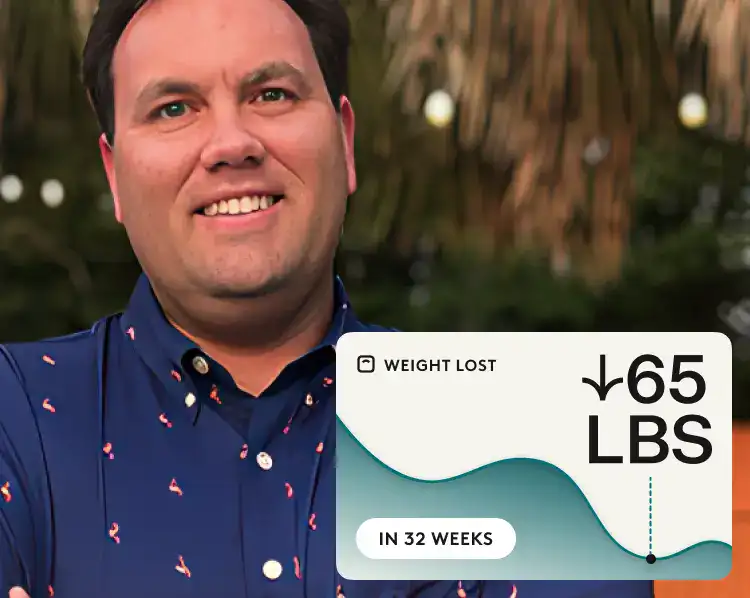

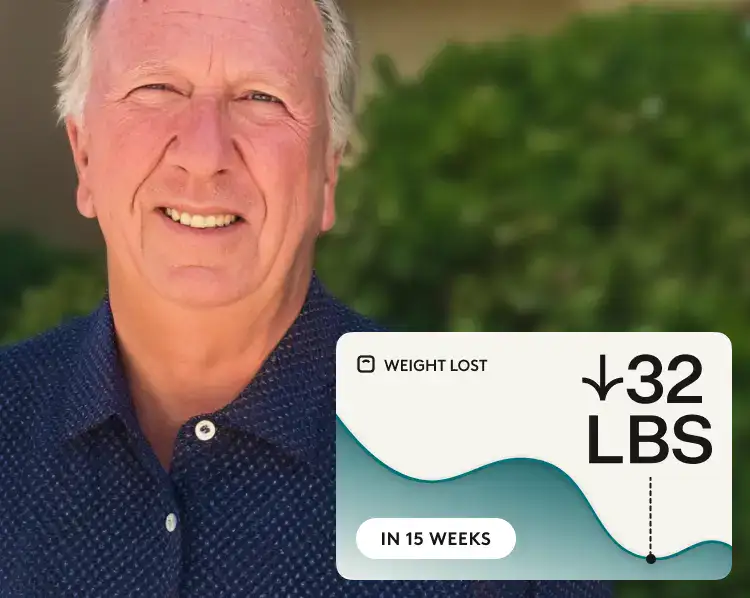
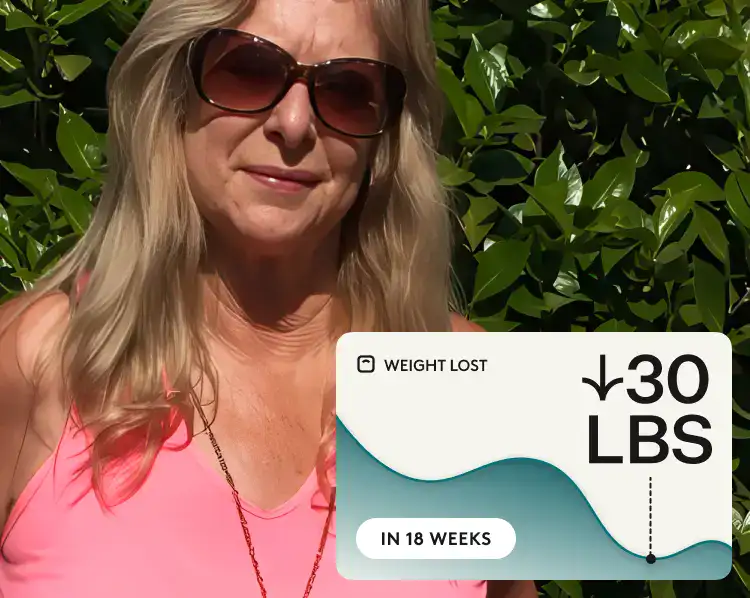

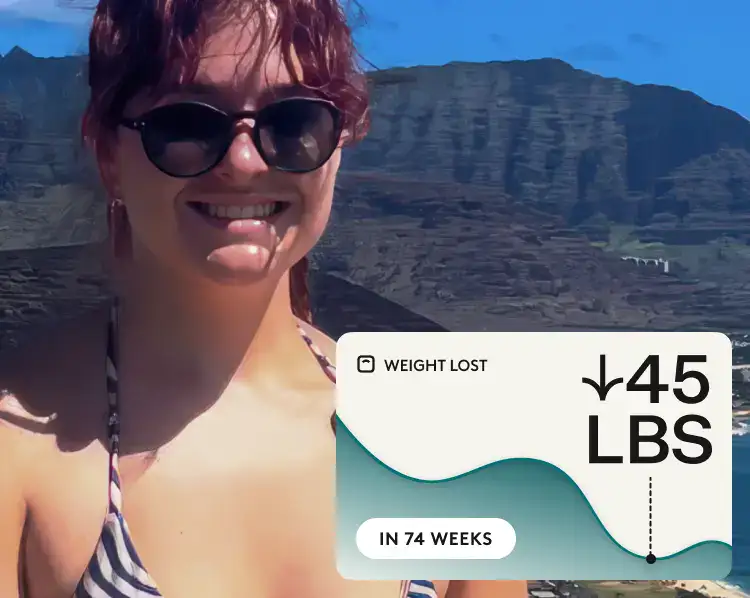


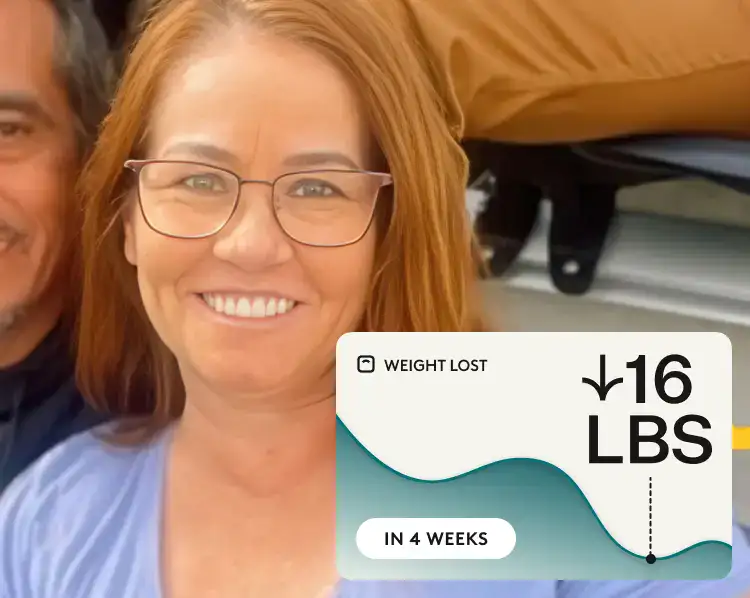


 Meaghan Cameron
Meaghan Cameron
 Noom Team
Noom Team

 Shoshana Fishbein
Shoshana Fishbein
 Melissa Kay
Melissa Kay
